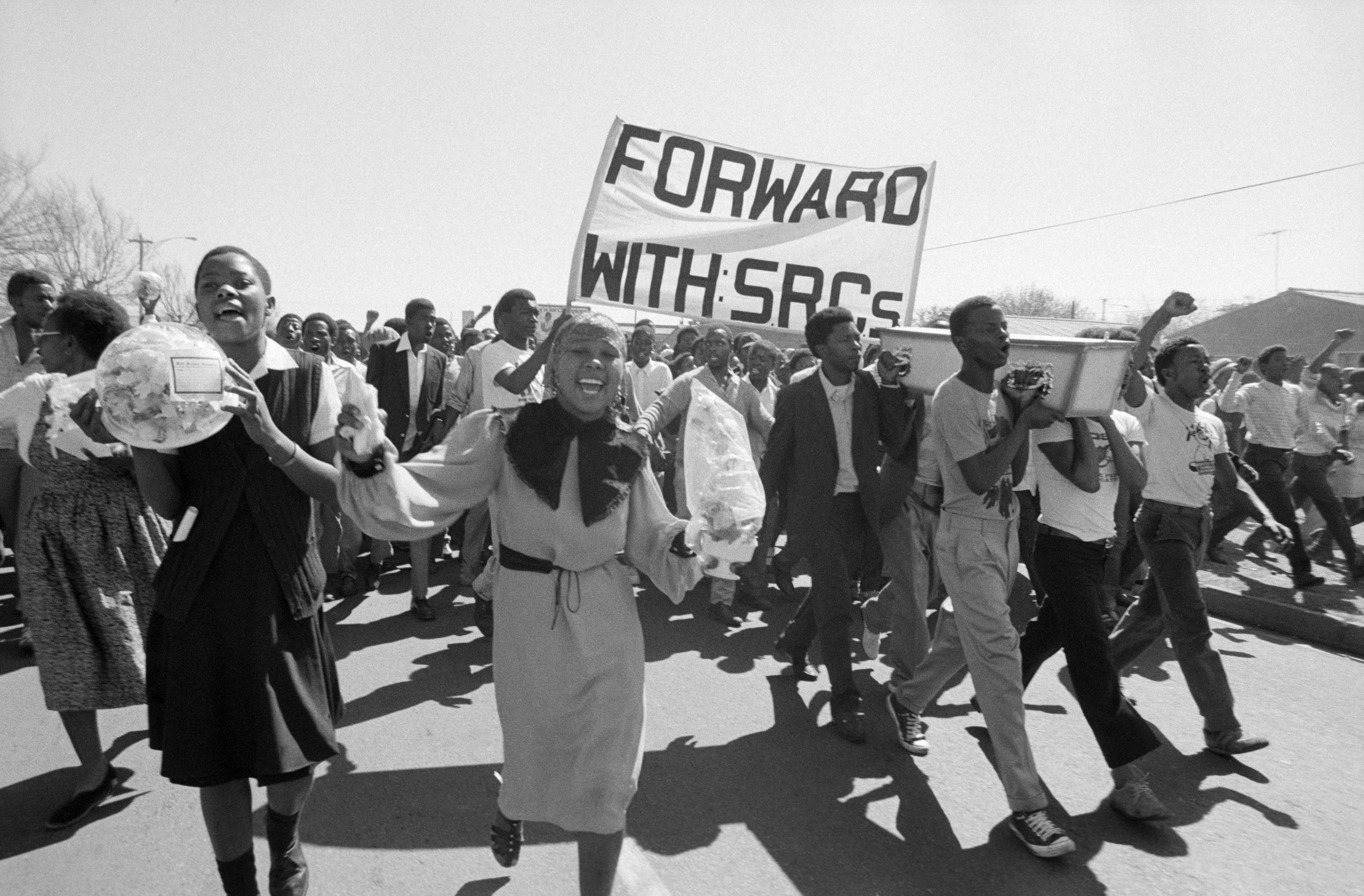

In 1984 rent boycotts in the Vaal Triangle sparked a new wave of spontaneous, popular resistance from a range of different groupings within South African society. The youth played an increasingly important role in the ‘unrest’ that ensued. A large number of youth organisations were formed in an attempt to mobilise the youth to action. By the beginning of 1985, the African National Congress had realised the vast potential of the youth in the struggle and tried to mobilise them to its cause. Thabo Mbeki, in a broadcast on Radio Freedom, called on the youth to “make the townships ungovernable.” The youth took him at his word.
The ‘comrades’ took to the streets of the townships and created havoc. ‘Comrades’ was a term that gave militant youth a sense of identity and belonging. The youth brought to the struggle a new energy and vibrancy, which was centred on the toyi-toyi, a militant dance that used to instil fear in the security police. They were also referred to as the ‘young lions’. The comrades were politically motivated and saw themselves as different from the ordinary youth in the townships. It was them who took lead in resistance in the townships in the 1980s.
They targeted local councillors who they saw as collaborators, as well as people suspected of being informers, and residents who did not participate in political campaigns. They often behaved in an extremely ruthless way. For example, there were reports of militant youth forcing residents to swallow washing powder or fish oil as punishment for their lack of involvement. This often alienated residents from the youth.
However, their actions did make the townships ungovernable. The on-going presence of security forces in the townships intensified the anger of the youth and led to violent confrontations with the police and army. Comrades used crude guerrilla tactics, such as the use of petrol bombs, creating burning barricades, throwing rocks. The situation in many townships had descended into an urban civil war, and it was in this context that the state imposed a state of emergency in eighteen regions, largely in the Witwatersrand and the Eastern Cape.
At the same time, the UDF tried to organise the youth in an attempt to harness their anger and to educate them and mobilise them on issues like unemployment and education. This led to the growth of further youth organisations. Militant youths accused political organisations like the UDF of being too moderate and favoured more direct action. Both the ANC and the UDF recognised that the call for ungovernability had increased the militancy of the youth, but it had made it very difficult to control them. In an attempt to reassert some control, the UDF called for the development of alternative structures of government in which ‘people’s power’ would be exercised. It was the youth organisations that took up this call.
Exhibitions in the classroom
Because of the restrictions imposed by the state of emergency, it was often difficult to meet and organise campaigns against apartheid. Funerals often became the site of mass organisation. The top photograph was taken at a funeral.
- Describe how the young people look in this photograph.
- What message is the photographer trying to get across? Refer to elements in the photograph when you answer.
- What is your response to this photograph?
NEXT: The education crisis continues


